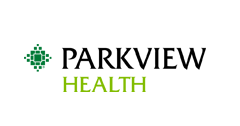Abstract
Background: Prevention of thromboembolism is key in individuals with non-valvular atrial fibrillation (NVAF) and nonadherence to oral anticoagulant (OAC) therapy is a frequent causative factor of stroke. Many factors contribute to the complexity of medication nonadherence. Thus, education aimed at changing health behaviors must be tailored to address the unique internal motivations and information needs of those confronted with the daily choice to take a medication to prevent stroke. Delivery of tailored health education and medication reminders may be an effective way to empower individuals with NVAF and in consequence, improve OAC adherence.
Methods: We applied a patient-centered approach and conducted 1) focus groups, 2) online design survey, and 3) one-on-one design sessions with NVAF patients receiving OAC therapy. Analysis was sequentially conducted for each phase and utilized in the design of a tailored algorithm for patient health messaging to be sent through a personal health record (PHR). Patients with NVAF were recruited from a large institution-based cardiology practice under IRB approval.
Results: Focus group participants (N = 17) expressed a desire to have more information related to their condition and demonstrated gaps in knowledge related to NVAF and OACs. Analysis revealed significant themes for preferred content, timing, and delivery of tailored messaging. Design survey (N = 118) and design session (N = 18) findings uncovered nuanced information needs specific to OACs, lifestyle behaviors, and understanding of NVAF. Patients diagnosed with NVAF for a longer period of time (>1 year) expressed greater interest in information regarding lifestyle modifications. In comparison, patients recently diagnosed with NVAF (<1 year) expressed greater interest in information regarding medication side effects. Comprehensive analysis led to development of a tailored algorithm based on specific clinical indications of individuals. These include type of OAC, length of NVAF diagnosis and near real-time adherence rates measured using e-prescribing refill history and smart pill bottle data (Figure 1).
Conclusion: Our study revealed that individuals living with NVAF have a desire to better understand and manage their condition, and feel that targeted health information may help them to do so. In this presentation we share the results of an iterative design process to build a tailored messaging algorithm and PHR-based intervention for patients living with NVAF and receiving OAC therapy. The next phase of our work will evaluate the effectiveness of the intervention on patient engagement and the resultant effect on medication adherence and health outcomes.
Document Type
Article
Publication Date
10-5-2017
Publication Title
Journal of the American College of Cardiology
First Page
2507
Recommended Citation
Roebuck, Amelia; Wagner, Shauna; Ahmed, Ryan; Rohani Ghahari, Romisa; Daley, Carly; Carpenter, Maria D.; Toscos, Tammy; and Mirro, Michael MD, FACC, FHRS, FAHA, "“I don’t know how you can be the decision maker when you don’t understand”: designing a tailored E-health intervention to empower patients living with non-valvular atrial fibrillation" (2017). Health Services and Informatics Research. 158.
https://researchrepository.parkviewhealth.org/informatics/158

